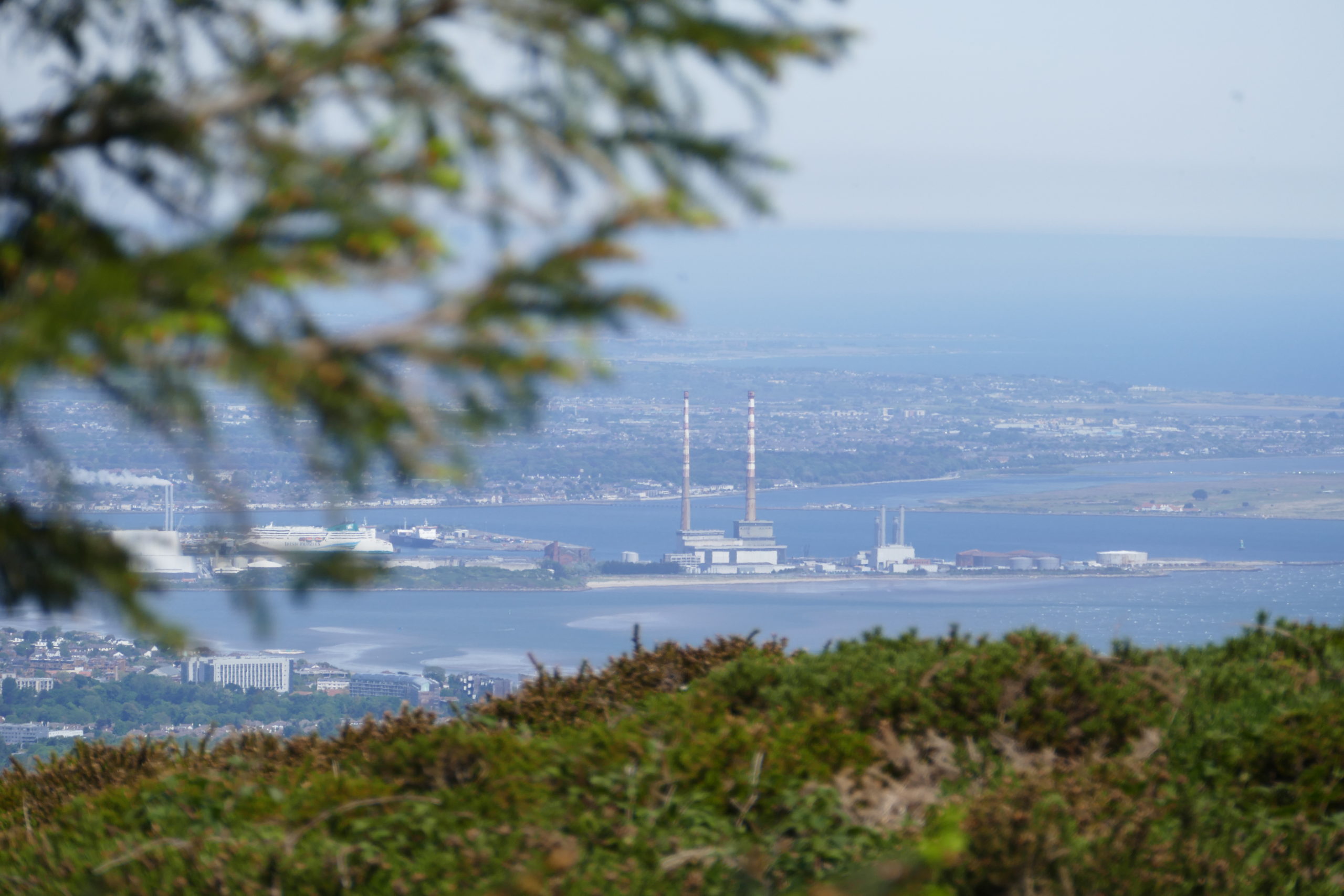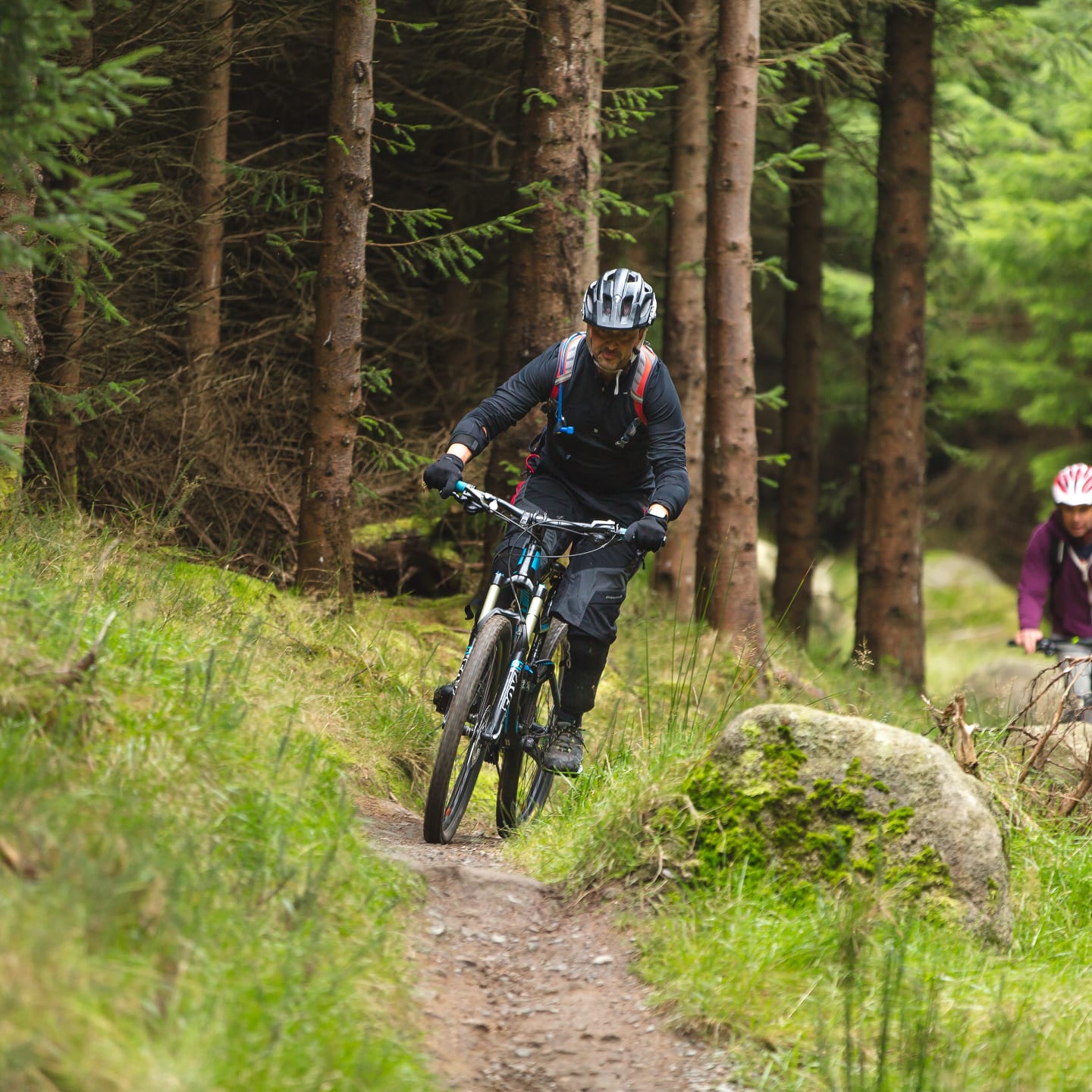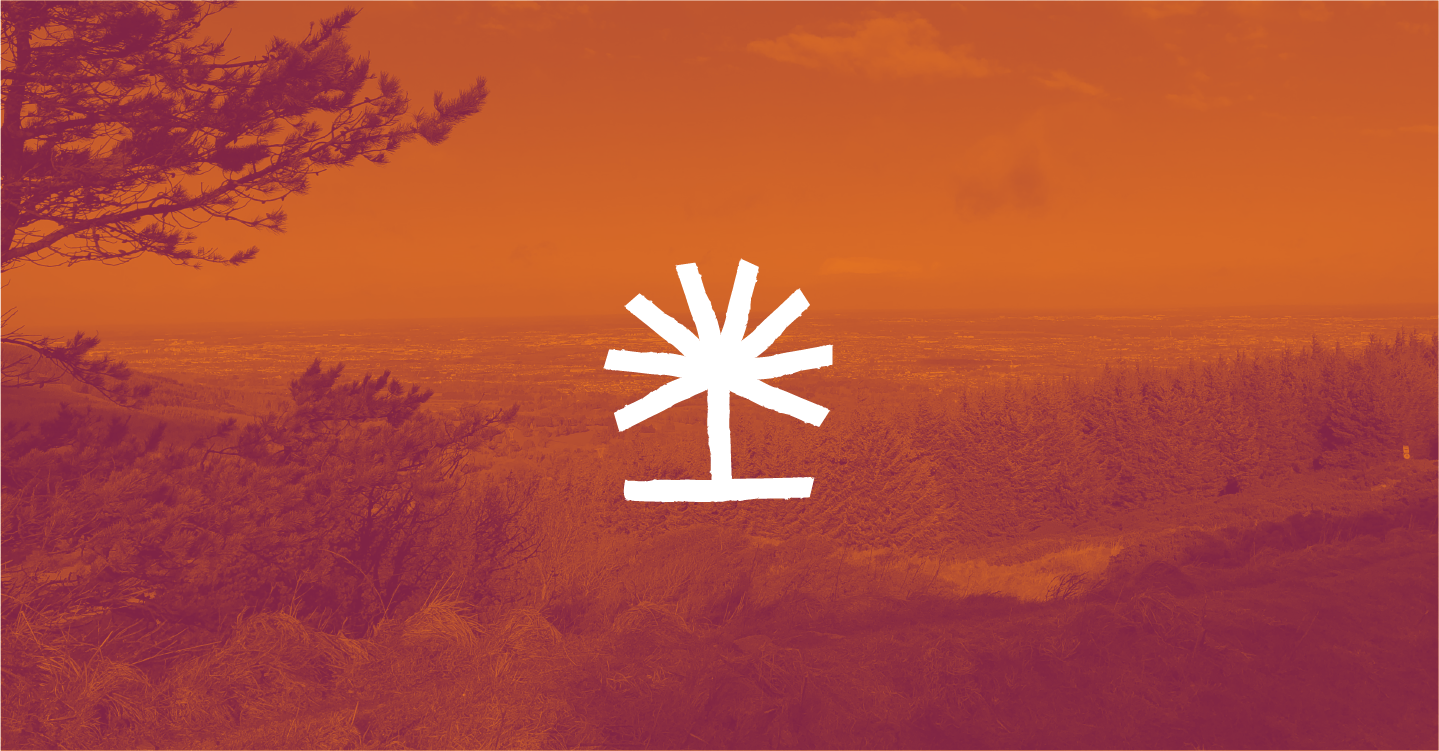A Beginner’s Guide to R&R
In some parts of the Dublin Mountain forests, we’re changing the tree species by removing timber forests and replanting them with native woodlands – a process we call ‘R&R’. In this blog, we explain what R&R is, how it works and what the benefits will be.
Native broadleaves are rare in the Dublin Mountains
The forests in the Dublin Mountain are dominated by exotic conifer trees like Sitka spruce, larch and lodgepole pine, which cover 86% of the area (see photo, right). These species are more tolerant of the mountainsides’ poor peaty soils and wind exposure than their broadleaf cousins. When these forests were first planted in the 1940s and 1950s, they were considered to be an ideal place to grow Ireland’s timber resource.
There are some broadleaves in the Dublin Mountains - typically found in the more sheltered, low elevation sites such as Massy’s Estate, Barnaslingan and Carrickgollogan. But they only comprise around 9% of the total area, and most are non-native beech and non-native sycamore. In comparison to the dominant conifers, native trees are quite rare.
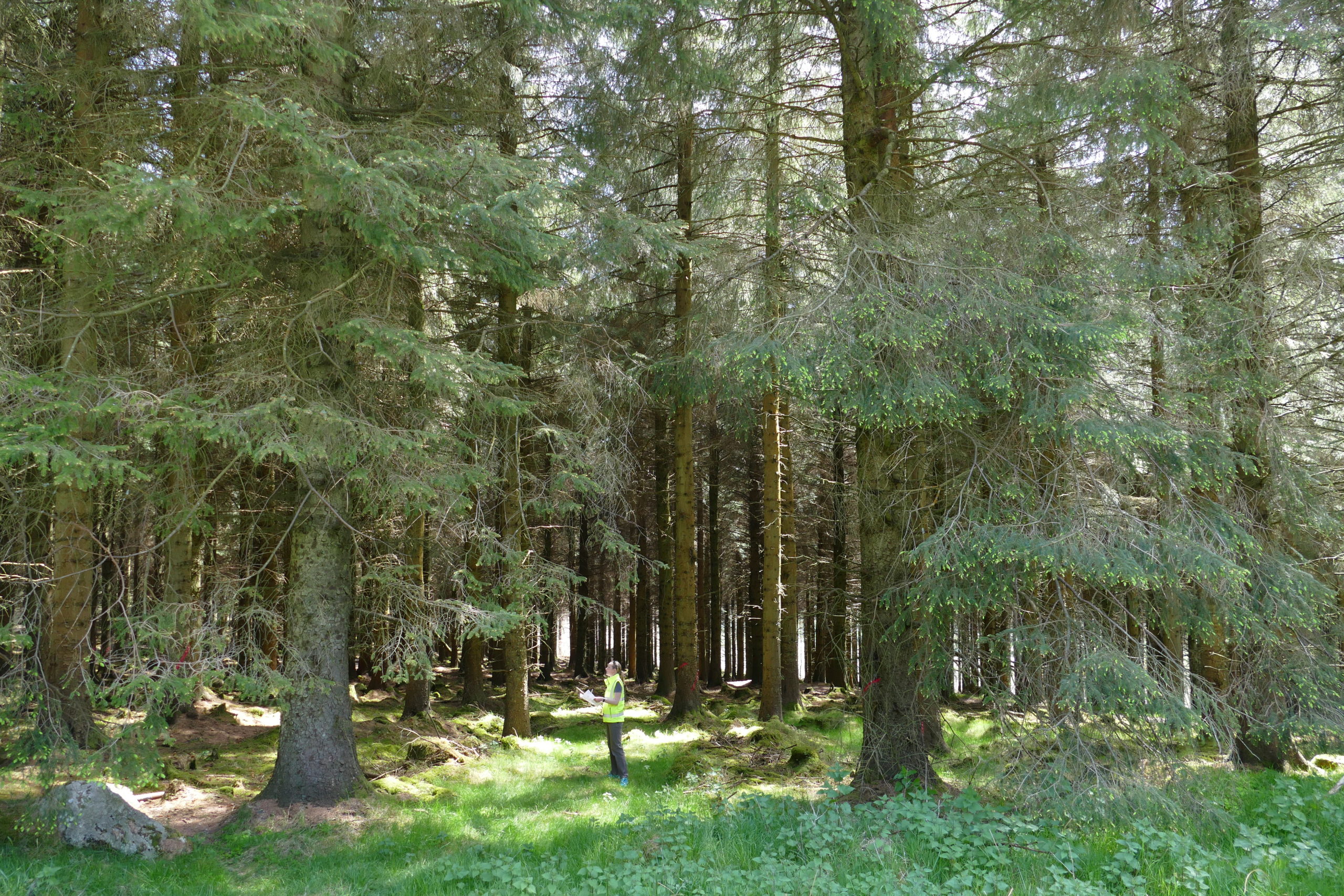
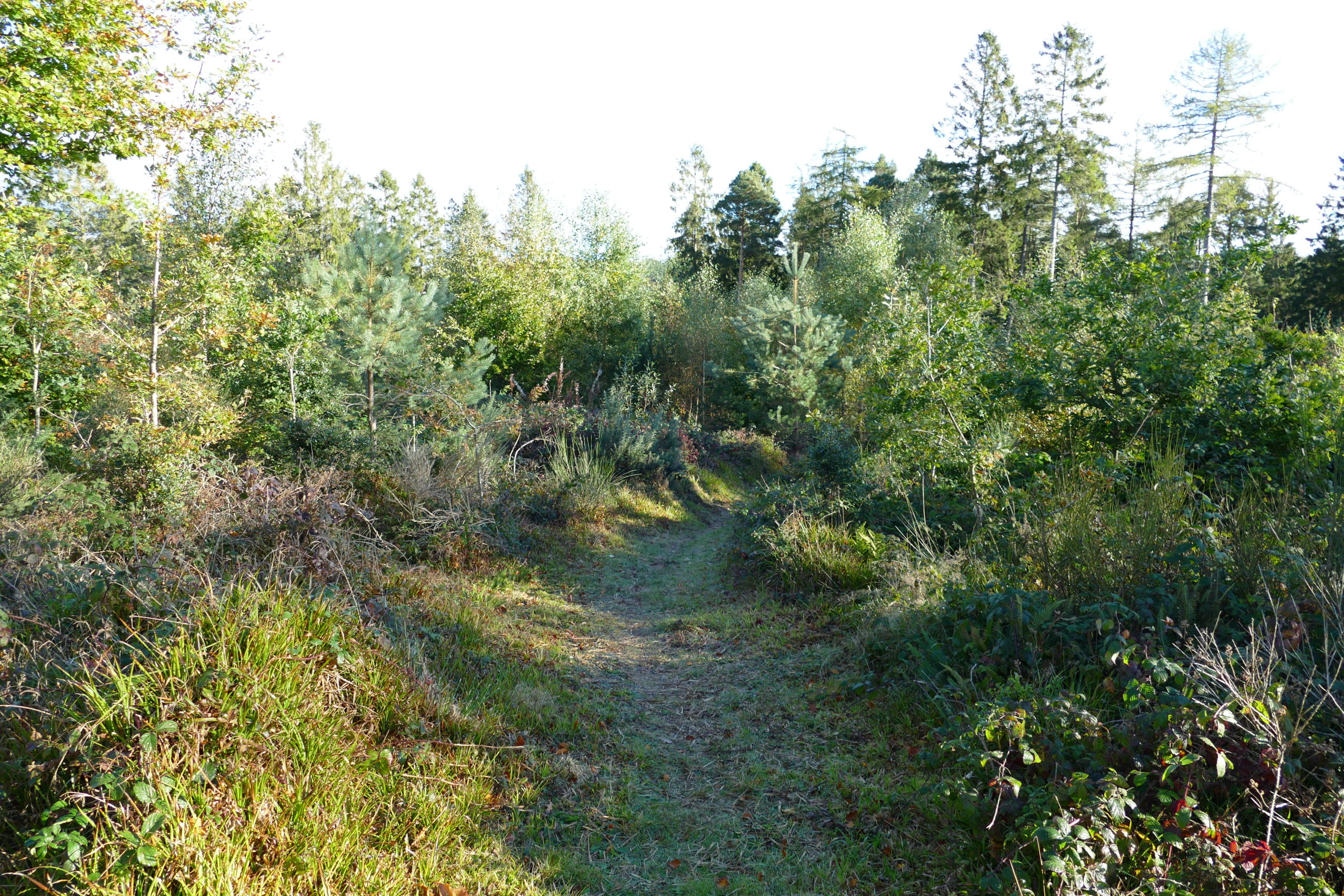
R&R speeds up native woodland establishment
The Dublin Mountains Makeover aims to manage much of the Dublin Mountains forests through Continuous Cover Forestry (CCF, see here for an explainer). Over time, this will increase the amount of native tree species within the pure conifer forests, but it will be a very slow process.
To speed up native tree cover, we’re removing some of the conifer forests altogether and replanting them with native woodlands (see photo, left). We call this process ‘R&R’ - Remove & Replant.
Native woodlands have an important role to play in the uplands. While their growth may never be as strong as that of the conifers, they bring their own benefits to the hills. Biodiversity is a particularly important benefit – creating new native woodland habitats is good for wildlife – but they will also help to make the forests more resilient to the impact of climate change, enrich their recreational appeal and bring more colour to the landscape.
In December 2020, we’ll be doing the first R&R as part of the Dublin Mountains Makeover by planting a new native woodland in Ireland’s most popular forest, Ticknock. Below is a guide to what we’ll be doing, and why.
Step 1: Develop a Native Woodland Plan
To undertake R&R in a forest, the first step is for an ecologist and forester assess the site to determine the ecological priorities and management objectives for the site and develop a Native Woodland Plan. The site survey looks at the soil types, existing habitats, biodiversity features (big old trees, streams, wet areas, special habitats or species present, etc). This will all determine the most appropriate native woodland habitat for the site and the mix of native trees to be planted
Step 2: Clearfell the conifer trees
Then the mature conifer trees will be clearfelled by machine and the timber will be processed into different log products for the sawmilling sector. Products such as construction timber, pallet wood (vital for transporting food, equipment and other products) and pulp wood (making panels for construction works). After a few weeks the ‘lop and top’ – the branches - will be removed and chipped to leave a cleaner and tidier-looking site. In other areas where the lop and top is not so heavy, we will pull these branches into rows to gradually decompose on site.
Step 3: Prepare the site
We will prepare the site for the new native trees using a technique called inverted mounding – this is where a machine turns over the top layer of soil to mix it and places it back on the ground to provide a better planting spot for the new trees across the site. This will help the trees compete against other herbs and shrubs establishing on the site.
Step 4: Put up a fence to keep deer out
Our native trees are a favourite food for the Sika deer that frequent the forests, so it’s necessary to put up a deer fence (though sometimes, we use tree shelters – plastic wraps that protect the saplings). Careful planning of the fences will be needed to try to maintain access to the network of recreation trails, and hopefully we will build some new trails to allow you experience the new native woodland up close.
Step 5: Plant the new native woodland
Now, the site is ready to be planted with a mix of native trees, species such as Scots pine, birch, rowan, oak, holly and willow. We will be planting trees in accordance with the Forest Service’s ‘Native Woodland Conservation Scheme’ and following their planting mixture guidelines. The two most likely woodland types in the Dublin Mountains are oak-birch-holly woodland and pioneer birch woodland.
The planting mixture for oak birch holly woodland is approximately 30% Scots pine, 30% Sessile oak, downy birch 15%, rowan 15% and holly 10%. For pioneer birch woodland, it’s Downy birch (45%), rowan 10%, Scots pine (20%), sessile oak (15%), with 10% of other species such as holly, hawthorn, aspen, maybe some willow in wetter areas.
Step 6: Manage the woodland as it grows
Over the next few years, the site will be carefully monitored to ensure the new seedlings get established and grow well. The most important thing will be to make sure the fence does not get damaged. If the deer get in, they’ll eat all the young native trees. But we'll also ensure the trees are not getting outcompeted by other plants such as gorse, bramble, bracken, etc. It might be necessary to use some herbicides to help the young seedlings get above this competition, but these will be used only when absolutely necessary, minimally, and with the utmost caution.
Step 7: Enjoy it!
Visitors to the Dublin Mountains forests will get to enjoy watching beautiful new native woodlands grow and develop, bringing lovely autumn colour to the hills and a greater number and diversity of plants and animals. Before this can happen, there will be some clearfell (see Step 2), but it will be the last clearfell: these new native woodlands will be managed in a way that enables us to maintain the canopy. We’re asking everyone who loves the Dublin Mountains to endure some short term pain for long term gain, so that we can create beautiful, more diverse and resilient forests for the future.
